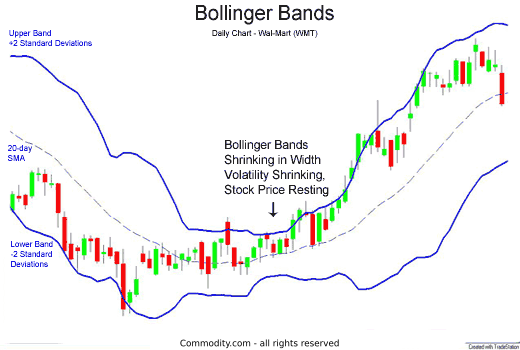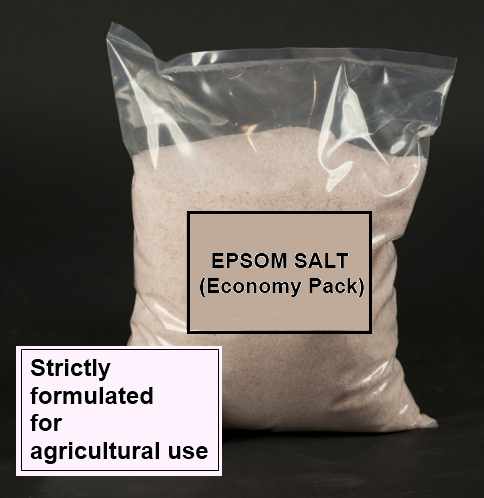
Now let’s add in the value of the
option trade… and let’s assume that the value is $200. PnL Unexplained is bad and should
be avoided, meaning to be minimized or reduced to zero. Depending on the methodology used, it may not
be possible to eliminate all PnL Unexplained. Note that ‘deal’ and ‘trade’ are
used interchangeably and mean the same thing in this FAQ. Take O’Reilly with you and learn anywhere, anytime on your phone and tablet. O’Reilly members experience books, live events, courses curated by job role, and more from O’Reilly and nearly 200 top publishers.

For additional information about rates on margin loans, please see Margin Loan Rates. Security futures involve a high degree of risk and are not suitable for all investors. Before trading security futures, read the Security Futures Risk Disclosure Statement. Structured products and fixed income products such as bonds are complex products that are more risky and are not suitable for all investors. In mark-to-market accounting for traders, the gain will also be recorded as “other comprehensive income” in the equity section on the balance sheet.
What companies use mark-to-market accounting?
Similarly, a business that offers discounts to quickly fill up its accounts receivables (AR) will have to bring the AR to a lower value by using a contra asset account. The changes will be recorded using the double-entry accounting method, meaning when customers use their discount, the company will record a debit to the AR and credit the sales revenue for the total sales price. That said, mark-to-market accounting might lead to an inaccurate presentation of the assets’ value, especially in times of high volatility. This method is also known under the terms fair value accounting or market value accounting. The alternative method to MTM is historical cost accounting which values the assets based on their original cost.
Machine learning-based technique for gain and resonance … – Nature.com
Machine learning-based technique for gain and resonance ….
Posted: Thu, 03 Aug 2023 10:47:09 GMT [source]
Later in this session we will discuss the Simple template as well as how you can create customized statement templates to select only those sections you need and choose how to view P&L – in either FIFO or MTM format or both. Thus, FAS 157 applies in the cases above where a company is required or elects to record an asset or liability at fair value. Similarly, if the stock decreases to $3, the mark-to-market value is $30 and the investor has an unrealized loss of $10 on the original investment.
It will be considered a capital loss if the holder sells their assets at a lower value than the price at which they were acquired. Giant corporations like AT&T, Verizon Communications, and Honeywell International have adopted the mark-to-market accounting principle for the valuation of their pension plans instead of the typical amortizing or smoothing accounting method. This method in corporate accounting recognizes the gains and losses in the year they occur by adjusting pension plans with fair value. It reflects pension plans’ current returns in assets, changes in discount rates on liabilities, and other gains or losses instead of moving the revenues and expenses from one period to another, as in the smoothing approach. The mark-to-market accounting principle involves adjusting the value of an asset to reflect the current market conditions.
Loans and debt securities that are held for investment or to maturity are recorded at amortized cost, unless they are deemed to be impaired (in which case, a loss is recognized). However, if they are available for sale or held for sale, they are required to be recorded at fair value or the lower of cost or fair value, respectively. Traders who focus on futures and future options should be aware of the 1256 tax treatment in mark-to-market accounting.
Mark to Market (MTM): What It Means in Accounting, Finance, and Investing
You can also find the website of the IBKR entity for your region at the bottom of this page. Any information provided by third parties has been obtained from sources believed to be reliable and accurate; however, IBKR does not warrant its accuracy and assumes no responsibility for any errors or omissions. Now let’s assume that the
explanatory factors are not perfect… and that there is some unexplained.
- In this situation, the company would record a debit to accounts receivable and a credit to sales revenue for the full sales price.
- For Over-The-Counter (OTC) derivatives, when one counterparty defaults, the sequence of events that follows is governed by an ISDA contract.
- FAS 157 requires that in valuing a liability, an entity should consider the nonperformance risk.
- Users that hold those positions should have that in mind when looking at the Total P&L and Internal Rate of Return.
This can occur when a company is forced to calculate the selling price of its assets or liabilities during unfavorable or volatile times, as during a financial crisis. This section of the Default MTM Summary shows the Mark-to-Market (MTM) profit and
loss amounts difference between mtm and p&l for each position held in your account for the period of the
statement. Information is sorted by asset class then by currency, and Market Value
and MTM profit and loss amounts are totaled for each currency and for all asset
classes at the bottom of the section.
Mark-to-Market Accounting in Financial Services
Institutional customers with IBExecution or IBPrime Services will have an Unsettled Transfer section which details DVP, NSCC, CMTA, and GUS trade give-ups into and out of our broker. FAS 157 only applies when another accounting rule requires or permits a fair value measure for that item. While FAS 157 does not introduce any new requirements mandating the use of fair value, the definition as outlined does introduce certain important differences. We are redirecting you to the Interactive Brokers LLC (U.S.) Website by default. Should you decide to open an account, you will be redirected to the account application for your region.

The amount you paid is a historical cost, while the replacement cost will depend on the current conditions of the market. For instance, the replacement cost to build your home from scratch will be listed on a homeowner’s insurance, not the amount you originally paid for it. In marking-to-market a derivatives account, at pre-determined periodic intervals, each counterparty exchanges the change in the market value of their account in cash.
The most common method of determining P&L for stocks and options is First In, First Out (FIFO) where closing transactions are matched to opening transactions and a profit or loss is realized when a position is closed. The Realized and Unrealized Performance Summary in Base shows Profit & Loss (P&L) by underlying and asset class in your chosen base currency. In trading and investing, certain securities, such as futures and mutual funds, are also marked to market to show the current market value of these investments. Mark-to-market is the most prevalent in the financial services industry, where assets’ value must be adjusted daily to the current market conditions. The mark-to-market method in accounting values assets based on momentary market conditions, also known as fair value. The value is calculated based on how much a company can make if it sells the asset today.
Now a $100 of unexplained might be 10% of the
PnL change, but it is a negligible percent of the overall value of the
trade. Amendments – PnL due to trade
amendments is also typically shown in a PnL Explained report in a single
column. As with the ‘impact of new
trades’, there is no one right way to show causes of PnL, i.e., more than one
right number of columns/buckets. For
example, you could have one column for PnL due to amendments in trade volume
and a separate column for amendments for other (i.e., not volume) changes. Step 1) Use the gamma (i.e., the
original gamma from when the price of the underlying is $50) to calculate the
delta for different prices… in this case a range of prices from $49.98 to
$50.08). The right to buy 100 barrels of
crude oil at a strike price of $50 when crude oil is trading at $50/barrel and
the option expires in three month.
What Are Mark to Market Losses?
The most infamous use of mark-to-market in this way was the Enron scandal. Mark to market (MTM) is a method of measuring the fair value of accounts that can fluctuate over time, such as assets and liabilities. Mark to market aims to provide a realistic appraisal of an institution’s or company’s current financial situation based on current market conditions. It’s the primary accounting method for financial services and investment companies where the assets’ price needs to be adjusted daily.
All of these are recorded at historic cost and then impaired as circumstances indicate. Correcting for a loss of value for these assets is called impairment rather than marking to market. The daily mark to market settlements will continue until the expiration date of the futures contract or until the farmer closes out his position by going long on a contract with the same maturity. If at the end of the day, the futures contract entered into goes down in value, the long margin account will be decreased and the short margin account increased to reflect the change in the value of the derivative.
Practical Mark-to-Market Accounting Example
These sections are sorted by currency, are translated to the base currency, and tie to the Mark to Market Performance Summary as well as the Cash Report. The change in position value section explains the changes in your position value from the beginning of the period to the end of the period. Users that hold those positions should have that in mind when looking at the Total P&L and Internal Rate of Return.
His name was Masayoshi Son, the person behind the international conglomerate and tech giant SoftBank Group. Driving under the influence not only puts you and other people in danger, but it also can earn you a hefty fine. Residents in some states may even have to serve jail time or do community service. These calculations don’t have to be done manually if you use accounting software. The Deposits/Withdrawals table shows all activity into and out of your account. Advisors and Brokers who charge their clients fees will have a Client Fee section on the master account statement.
How do you calculate gain or loss in MTM?
IBKR does not make any representations or warranties concerning the past or future performance of any financial instrument. By posting material on IBKR Campus, IBKR is not representing that any particular financial instrument or trading strategy is appropriate for you. New Trades – PnL due to new trades,
i.e., trades done on the current date, is typically put in its own column
(a.k.a. its own ‘bucket’). If a finer granularity is desired, you could
put the PnL from new trades into multiple columns (a.k.a. ‘buckets’). For example, you could split it by deal type,
e.g., ‘new options PnL’ vs. ‘new non-options PnL’.
Mark to market (MTM) is an accounting method that values assets based on the current market conditions. Profit and Loss (P&L) is the financial statement that summarizes the revenues and expenses during a specific period. Investors and analysts are among the users of accounting information in the P&L statement.
1) Can be fully accurate, meaning there can be no
explained since the revaluation method isn’t subject to the limitations in
accuracy of the sensitivities method as it is typically implemented. 1) The sensitivity method is inherently incapable of
explaining P&L unless all first, second, and higher order sensitivities
are calculated as well as all cross effects. However, calculating all sensitivities is not usually practical from a
performance point of view.













